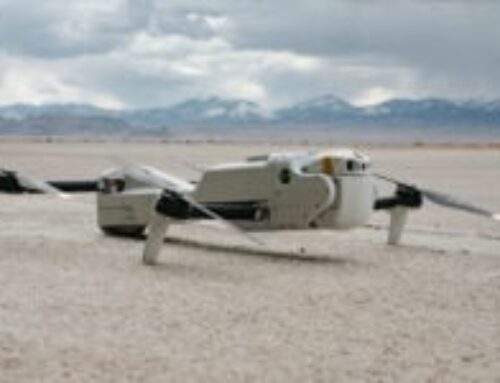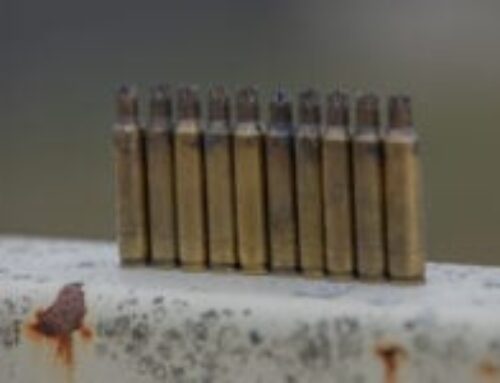AeroVironment’s Switchblade 600 bares its teeth at Sea Air Space.The loitering munition has gotten real-world practice during the Ukraine conflict, as a number of the weapons have been sent from the US to Kyiv. (Aaron Mehta/Breaking Defense)
WASHINGTON — The Pentagon released new details about its Replicator initiative today, confirming AeroVironment’s Switchblade 600 one-way attack drone is, in fact, part of the first tranche.
“The first tranche of Replicator capabilities include uncrewed surface vehicles (USV), uncrewed aerial systems (UAS) and counter-uncrewed aerial systems (c-UAS) of various sizes and payloads from several traditional and non-traditional vendors,” the department wrote in a press release.
Up in the air, the Army’s Switchblade-600 loitering munition bid was greenlit for this first batch after it “already demonstrated … [its] utility in Ukraine, and this system will provide additional capability to US forces,” the Pentagon added.
Earlier this year, Defense Scoop reported that Switchblade made the final cut. Army acquisition head Doug Bush subsequently confirmed that his service submitted a trio of capabilities for the first Replicator round and noted that one was selected and would likely be the “biggest participant … in terms of quantity.” (He said the service has proposed three more technologies for the second tranche.)
Beyond the Switchblade-600 news today, the Pentagon is remaining mum about the other systems picked this round citing classification levels but said there are other capabilities in the maritime domain and counter-UAS realm. However, when it comes to maritime tech, the department noted that it wants to diversify its USV vendor base via the Production-Ready, Inexpensive, Maritime Expeditionary (PRIME) commercial solutions opening.
In August 2023, Deputy Defense Secretary Kathleen Hicks unveiled the new Replicator inactive and billed it as one avenue for countering China’s military mass by cranking out multiple thousands of “attritable autonomous systems” within two years — think unmanned surface vessels and loitering drones. However, specifics have largely remained under wraps, even as the department secured approximately $500 million in fiscal 2024 funding, and requested an equal amount in funding for FY25.
“This is a critical step in delivering the capabilities we need, at the scale and speed we need, to continue securing a free and open Indo-Pacific” said Admiral Samuel Paparo, commander of US Indo-Pacific Command. “The entire department has come together to help make this a reality.”











